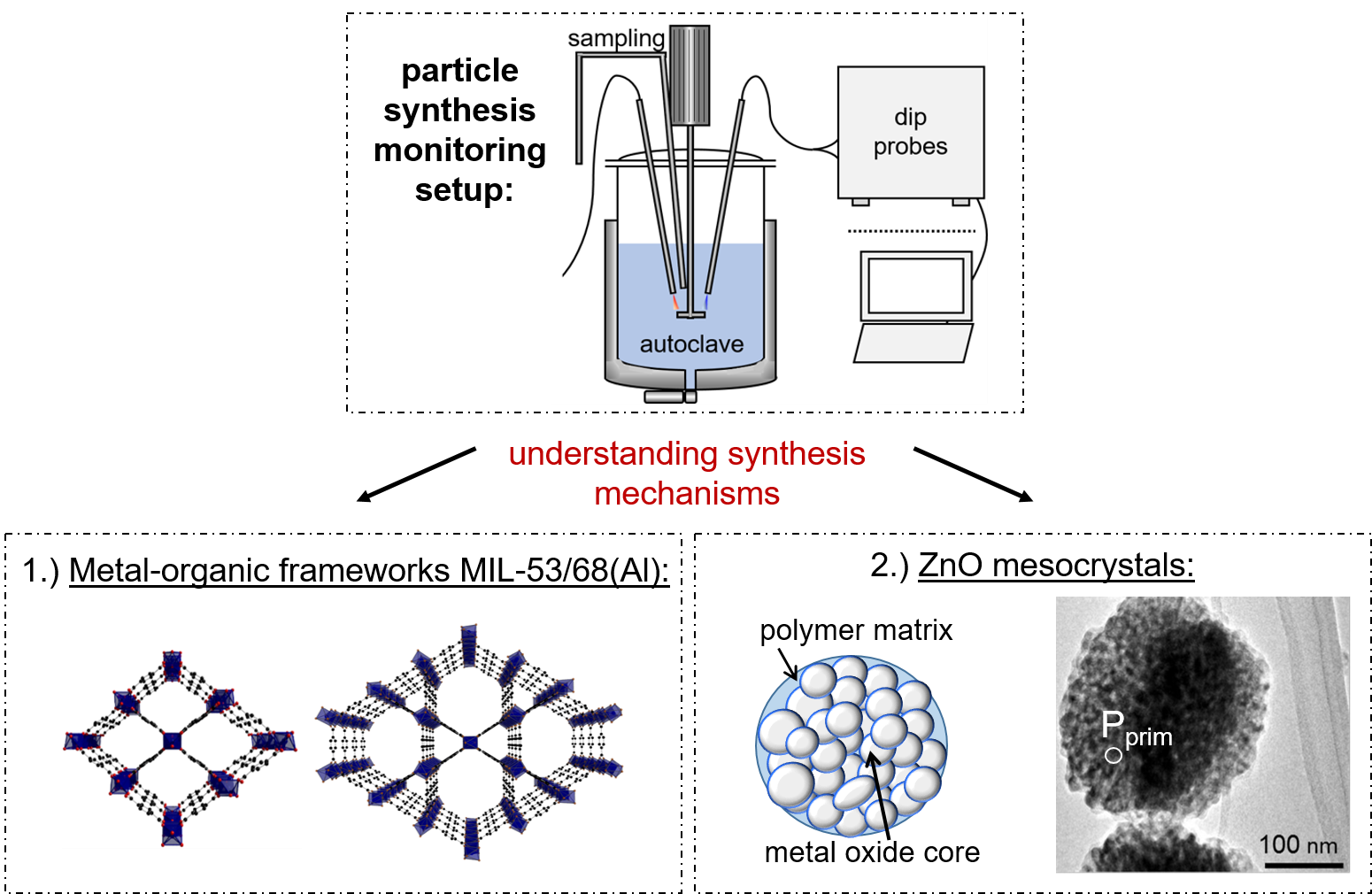In situ monitoring of particle formation
Metal-Organic Frameworks (MOFs) are highly-crystalline microporous materials, made up of infinitely repeating coordination networks organized in one, two, or three dimensions. Due to their unique structure, they show great promise in the fields of catalysis, gas storage, and separation technology.
Mesocrystals are superstructures of clearly-separated crystals oriented in a regular periodic pattern and possessing long-range crystal order. They have various applications in sunscreens, catalysis, and gas separation. ZnO-PVP mesospheres are used as a model system to better understand of mesocrystal growth.

Solvothermal MOF and ZnO mesocrystal synthesis are studied with various in situ techniques including FTIR and Raman spectroscopy, dynamic light scattering, and turbidity monitoring in a custom designed reactor.
The first aim of this project is to gain understanding of the solvothermal self-assembly mechanisms of the metal-organic framework (MOF) MIL-53(Al) and of ZnO-poly(N-vinylpyrrolidone) (PVP) mesospheres. The second objective was to use the acquired knowledge of the MIL-53(Al) and ZnO mesosphere formation pathways to rationally understand the connection between solvothermal synthesis parameters and the resulting particle properties.